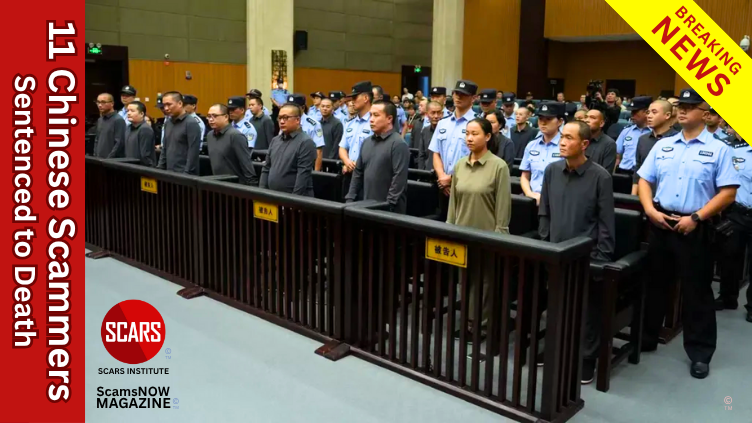
5 Things Everyone Should Know About Their Psychology
Five Non-Negotiables About Your Psychology and How to Use Them Every Day
Primary Category: Psychology
Authors:
• Vianey Gonzalez B.Sc(Psych) – Licensed Psychologist, Specialty in Crime Victim Trauma Therapy, Neuropsychologist, Certified Deception Professional, Psychology Advisory Panel & Director of the Society of Citizens Against Relationship Scams Inc.
• Tim McGuinness, Ph.D., DFin, MCPO, MAnth – Anthropologist, Scientist, Polymath, Director of the Society of Citizens Against Relationship Scams Inc.
Author Biographies Below
About This Article
A steady path to better decisions and durable progress rests on five non-negotiables. The mind predicts first and explains later, so assumptions require small tests before major commitments. Emotions signal needs and risks yet do not issue orders; when named and paired with facts, they guide rather than control. Habits, stories, and environment outpace willpower; tiny first steps and clear cues create consistency. Relationships and context compound like interest; dependability, clarity, generosity, and fast repair build trust and invite honest feedback. Purpose aligned with visible indicators turns motion into progress; brief weekly reviews convert setbacks into adjustments. Together, these practices replace reactivity with regulation, guesswork with observation, and isolated effort with designed systems, leading to calmer choices, quicker course corrections, and outcomes that match stated aims.
Note: This article is intended for informational purposes and does not replace professional medical advice. If you are experiencing distress, please consult a qualified mental health professional.

Five Non-Negotiables About Your Psychology and How to Use Them Every Day
Five non-negotiables of human psychology clarify how decisions form, why reactions harden under stress, and how change becomes durable. The mind predicts first and explains later, emotions carry information but not commands, and daily outcomes follow designed habits, stories, and surroundings more than willpower. Trust and context accumulate like capital, shaping options, feedback, and resilience. A clear purpose paired with visible measures turns motion into progress and prevents drift. Together, these principles replace guesswork with small tests, keep attention on facts and agency, and translate pressure into steady action.
1. Your Mind Predicts First, Then Explains Later (or Lies About It)
You do not take in reality like a camera. Your brain is a prediction engine that guesses what is happening based on past patterns, then edits your perception to fit those guesses. After that, it generates reasons that feel true. This saves time and energy in everyday life, but it creates confident mistakes. Certainty often signals habit, not accuracy.
Prediction simplifies complexity by using shortcuts called heuristics. These shortcuts highlight a few features and ignore the rest. When they match the situation, decisions feel effortless. When they do not, you keep seeing what you expect and miss what matters. That is why two people can look at the same email, text, or statement and walk away with different conclusions. Each mind filled the gaps with different predictions.
Stress amplifies this pattern. Under pressure, your brain narrows attention to what seems most relevant to survival and pushes you toward fast rules. You reach for familiar stories such as “this always happens to me” or “I must act now.” The more urgent it feels, the more your mind defends the first explanation it produced. You then backfill with reasons that sound logical because they match your expectations. The loop closes, and new information struggles to get in.
You can break this loop without shaming yourself. First, treat certainty as a cue to slow down, not a proof that you are right. Ask one question that invites disconfirmation. “What would I notice if I were wrong?” Then look for a single fact that points the other way. You can also create a small test. If this explanation is true, what short action would produce a clear result? Run that test before you commit resources or make a big decision.
Second, separate observation from interpretation. Write one sentence that states what you saw or heard, and a second sentence that states what you think it means. Keeping those lines distinct protects you from acting on stories disguised as facts. Third, get an external perspective that you pre-commit to accept. Ask one trusted person to review your reasoning and to name one alternative you did not consider.
You will notice that curiosity loosens the grip of prediction. Curiosity pulls in data your first story would have filtered out. It does not force agreement or require you to abandon your instincts. It simply makes room for a better explanation to replace a weaker one. Over time, you train your mind to predict less rigidly. You keep the speed of intuition for routine matters and reserve slower, more careful thinking for decisions that carry risk. That is how you avoid repeating the same costly error with new details and a fresh date.
Daily practice you can use now
- When you feel sure, write one alternative explanation and one fast test.
- Speak your observation in one sentence, then your interpretation in a second sentence.
- Ask one trusted person, “What am I not seeing?” and listen without defending.
- If urgency spikes, pause for two longer exhales than inhales, then decide whether this choice truly expires in the next hour.
2. Emotions are Signals, Not Orders
Feelings are not the enemy of reason. They carry useful information about needs, risks, and values. They direct attention to potential threats or opportunities and tag memories so you recall what matters. Yet feelings are not reality by themselves. When you treat an emotion as a command, you hand over the steering wheel. When you treat it as a signal, you gain guidance without losing judgment.
High emotion narrows focus. Anger zooms in on injustice. Fear zooms in on danger. Shame zooms in on perceived failure. Each state highlights some data and hides other data. That selective spotlight can protect you in a crisis. It can also produce tunnel vision in everyday problems. You may act on the most vivid piece of information instead of the most important one. Later, you wonder how you missed what now seems obvious.
Your goal is not to mute emotions. Your goal is to name them, decode them fast, and blend them with facts and values. Start by naming what you feel in one word. Anger, fear, grief, guilt, shame, relief, hope. Naming the state reduces guesswork inside your nervous system and lowers intensity. Next, pair the feeling with two facts. Name one fact that supports the feeling and one fact that does not. This quick comparison widens attention without dismissing your experience.
After that, connect the feeling to a need. Anger may point to a boundary. Fear may point to uncertainty that needs information. Shame may point to a value you care about that you believe you violated. Once you name the likely need, you can choose a small action that serves it. The action might be a clarifying question, a boundary sentence, a request for time, or a concrete step on your plan. You act with the emotion in the passenger seat, not in the driver’s seat.
When the body is highly activated, language can fragment. That is when breath and pacing matter. Two longer exhales than inhales move you toward a steadier state. Slowing the pace of a conversation recovers working memory so you can process instructions. You can ask for one sentence at a time, repeat the sentence back, and write the key point. This is not a weakness. This is skilled regulation.
Daily practice you can use now
- Name one feeling, one fact that supports it, and one fact that does not.
- Ask, “What need is this feeling pointing to?” and choose one small action that serves that need.
- Use two longer exhales than inhales before any high-stakes reply.
- In hard conversations, request one sentence at a time and repeat it back before responding.
3. Habits, Stories, and Environment Beat Willpower
Most daily behavior runs on autopilot. Cues in your environment trigger scripts in your brain, and those scripts play with little conscious effort. You also carry inner narratives such as “I must fix problems alone” or “I always mess this up.” These stories shape what you notice, what you attempt, and when you quit. Together, cues, scripts, and stories drive more of your outcomes than motivation does. That is why systems outperform willpower.
If you rely on force of will, you will see boom and bust cycles. You push hard for a few days, then crash, then judge yourself, then try again with even more pressure. Confidence erodes and progress stalls. A better path is to design defaults that make the next right action easy and the wrong action inconvenient. It is also to rewrite stories that no longer serve you so they stop hijacking your choices.
Start at the point of friction. Shrink the first step to two minutes. Two minutes is short enough to start, even when you do not feel like it. Once you begin, momentum carries you. Pair a cue, a tiny action, and a quick reward. After breakfast, open the document and write one sentence. After you pay a bill, log the transaction. After your evening walk, send tomorrow’s calendar invite. Each cue anchors the action in your day. Each reward marks completion, so your brain learns to expect a small win.
Adjust your environment so the desired action is the default. Place important items in your path and remove temptations from reach. Put the checklist on the door. Turn off nonessential notifications. Keep only one work tab open. Use website blocks during focus periods. Physical and digital spaces either pull you forward or pull you away; design them to pull you forward.
Now address your stories. Ask, “What story am I using right now,” and write it in one sentence. If the story is rigid or global, replace it with a workable line you can test. Change “I must fix problems alone” to “I can ask for one form of help and still be responsible.” Change “I always fail at this” to “I can complete the next two-minute step and see what happens.” Stories are not poetry here; they are instructions. Make them useful.
Finally, expect stress to shift you toward old habits. Under load, your brain favors fast, familiar rules. Plan for this by creating precommitments. Set appointments for key tasks. Share your plan with one person who will check in. Automate what you can. These small structures catch you when motivation dips. They do not remove effort; they channel it.
Daily practice you can use now
- Reduce the first step of any important task to two minutes. Do it now.
- Pair each key behavior with a clear cue and a quick reward.
- Remove one distraction from your environment and add one visual prompt.
- Rewrite one rigid story into a workable sentence, then test it today.
4. Relationships and Context Compound Like Interest
Belonging, reputation, and trust are psychological assets. They accumulate through small behaviors and pay dividends in resilience, opportunity, and honest feedback. At the same time, human decisions are pulled by context and group norms more than most people recognize. Defaults, framing, and the behavior of peers shape your choices while feeling natural, not forced. When you invest in relationships and design your social context on purpose, your progress compounds.
Start with the three behaviors that build trust. Be dependable, be clear, and be generous. Dependable means you keep the promises you make and do not make promises you cannot keep. Clear means your requests and responses are specific, timely, and honest. Generous means you offer help within your limits and share credit. These behaviors reduce uncertainty for others and for you. Predictability makes collaboration easier, and collaboration multiplies your capacity.
Feedback is the fuel of improvement. Without it, self-deception becomes the default. Ask for specific feedback tied to your goals. “What should I do more of, less of, or differently to meet this target?” Invite one concrete example for each. Then reflect back on what you heard and state one change you will test. When people see that their input leads to action, they offer better input next time. You build a loop that upgrades your performance without drama.
Mind the quiet costs of isolation. When you withdraw, you lose perspective and opportunities. You also reduce the number of people who can speak plainly when you drift. Re-enter intentionally. Choose two relationships to strengthen this month. Schedule short, regular touchpoints rather than long, rare ones. Consistency beats intensity in relationships just as it does in habits.
Now, shape your social context. Join groups where the norm is to act on facts, keep commitments, and speak respectfully. If you cannot change a group’s norms, limit your exposure during critical windows. Protect your attention from voices that reward outrage or passivity. Seek peers who challenge your thinking with care. The people around you set the ceiling on what feels normal. Raise that ceiling and your own behavior rises with it.
Remember that small ruptures happen. Repair them fast with ownership, not excuses. State what happened, the impact, and what you will do differently. Do not wait for perfect words. Timely repair protects trust better than flawless performance. It also models accountability, which makes your environment safer for honest work.
Daily practice you can use now
- Send one concise update to a stakeholder on what has moved forward and what is next.
- Ask one person for more-or-less-different feedback and confirm what you will test.
- Put two recurring check-ins on the calendar with people who matter to your goals.
- Choose one context upgrade: a community, a mentor, or a peer group with high standards and steady support.
5. Purpose Plus Feedback Drives Adaptation
A clear why organizes attention. Tight feedback corrects the course. Without both, you drift, mistake activity for progress, and repeat unexamined patterns. Purpose gives direction; feedback gives steering. Together, they turn effort into outcomes.
Begin with a time-bound purpose. Write one sentence that defines your aim for the next twelve weeks. Keep it concrete and testable. The horizon is close enough to focus action and far enough to matter. Then define two visible indicators that you can count or verify. These are not vague hopes. They are measures that tell you whether your actions are working.
Break the purpose into weekly commitments. Each week, write three lead actions that cause progress and place them on your calendar. Protect those blocks the way you would protect a medical appointment. At the end of the week, run a short review. What worked, what did not, and what will you change next? Do not write essays. Write decisions for the week ahead.
Now add external feedback. Share your purpose and indicators with one person you trust. Schedule a ten-minute check-in to review the indicators and one lesson. Outside eyes catch drift early. They also keep you honest when you want to count motion as progress. If your indicators are not moving, adjust your actions, not your hopes. Adaptation is not a judgment of worth; it is a method for learning faster.
Tie purpose to values so it survives difficulty. Ask why this aim matters to who you want to be, not just what you want to have. When the task feels tedious, values keep you engaged. When a setback occurs, values help you persist without denial. You are not pushing for a number; you are practicing a way of being that the number represents.
Finally, expect plateaus. Progress often comes in steps, not a smooth line. Use plateaus to refine your system. Simplify tools, clarify checklists, and remove extra steps. Shorten the loop between action and feedback so you learn quicker. When you hit resistance, return to first principles. What is the smallest action that moves the indicator one notch? Do that now and reassess.
Daily practice you can use now
- Write a one-sentence twelve-week purpose and two visible indicators.
- Place three lead actions for this week on your calendar.
- Run a ten-minute review every Friday: what worked, what did not, what to change.
- Share your indicators with one person who will check them with you.
Closing Note: You Can Keep
Test your certainty. Treat emotions as signals. Design your defaults and your stories. Invest in relationships and shape your context. Steer by purpose and adjust with feedback. You will make steadier choices, recover faster from setbacks, and lower the odds of self-inflicted failure across work, money, and relationships.
Remember:
- It was not your fault
- You are a survivor
- You are not alone
- You are worthy – AXIOS
- Your feelings are real – VERO – but maybe not what you need
- You are stronger than you know
Conclusion
Lasting change follows clear principles rather than bursts of willpower. The five non-negotiables outlined here describe how human minds actually operate and how progress reliably accumulates. First, prediction comes before explanation. Assumptions feel true because they fit prior patterns. When those assumptions are tested with small checks, better decisions follow, and costly loops begin to unwind. Second, emotions convey meaningful signals about needs and risks but do not constitute orders. When feelings are named, paired with facts, and translated into proportionate steps, judgment steadies and action becomes workable.
Third, systems outperform motivation. Habits, stories, and surroundings set the default path. When the first step is small, the cue is visible, and the reward is immediate, consistency rises and effort stops collapsing into boom-and-bust cycles. Fourth, relationships and context compound like interest. Dependability, clarity, and generosity build trust, and trust invites honest feedback that shortens the distance between error and correction. Isolation, by contrast, expands blind spots and delays repair.
Fifth, purpose aligned with feedback directs adaptation. A specific aim, visible indicators, and brief weekly reviews convert activity into progress. When indicators stall, actions change rather than hopes. Values keep the course through plateaus and setbacks, tying effort to identity rather than to a momentary mood.
Together, these principles replace guesswork with observation, reactivity with regulation, and intention with design. They do not remove difficulty or guarantee comfort. They convert uncertainty into tests, feelings into information, and effort into routines that survive ordinary stress. Individuals who adopt even one small practice from each principle gain a sturdier way to decide, relate, and persist. Over time, that sturdiness becomes visible in calmer choices, faster course corrections, and outcomes that match stated aims. The path is not dramatic. It is practical, respectful of human limits, and proven by repetition.

Glossary
- Agency — This term refers to a person’s capacity to make choices and take action that shapes recovery. It reminds a scam victim that decisions, even small ones, influence outcomes and rebuild confidence.
- Alternative explanation — This is a second, workable way to understand an event. Considering one alternate view interrupts snap judgments and opens space for better decisions after fraud.
- Autopilot behavior — This describes routines that run with little thought because context cues trigger them. Naming these patterns helps a victim replace unhelpful reactions with smaller, safer steps.
- Boundary sentence — This is a short, respectful line that sets limits in hard conversations. It protects dignity and keeps dialogue focused on facts and next steps rather than blame.
- Context design — This means arranging spaces, tools, and routines so helpful choices are easy. A tidy inbox, a visible checklist, or a quiet hour can lower friction and prevent overwhelm.
- Cue — This is a prompt in the environment that starts a behavior. Linking a cue to one simple action and a quick reward can stabilize daily tasks during recovery.
- Daily practice — This is a repeatable, low-effort action that moves progress forward. Short practices build momentum when energy is low and help a victim regain a sense of control.
- Default option — This is the path that occurs with no extra effort. Making the healthy action the default, such as scheduled check-ins, reduces decision fatigue and prevents backsliding.
- Disconfirmation test — This is a quick check that asks what would be true if the first explanation were wrong. It lowers false certainty and catches errors before they become costly.
- Emotion labeling — This is the skill of naming a feeling in one word. Clear labels reduce intensity and make it easier to pair feelings with facts and proportionate steps.
- Emotion-regulation breath — This is a calm breath pattern that lengthens the exhale. It steadies the body, restores attention, and makes hard advice easier to hear.
- Environment design — This is the deliberate placement or removal of items that shape behavior. Visible prompts and fewer distractions support steady follow-through after a scam.
- External perspective — This is feedback from a trusted person who is not inside the situation. Outside eyes spot blind spots and help separate facts from assumptions.
- Facts versus interpretation — Facts describe what happened; interpretations explain what it might mean. Writing both in separate sentences keeps stories from masquerading as evidence.
- Feedback loop — This is a cycle where actions produce results, results are reviewed, and changes follow. Tight loops shorten the time between an error and a fix.
- Group norms — These are the unwritten rules that guide how people behave together. Choosing groups that value clarity, respect, and follow-through raises the quality of support.
- Heuristics — These are mental shortcuts the brain uses to decide quickly. Shortcuts save effort, yet they can miss warning signs unless checked with a simple test.
- High-emotion narrowing — This describes how strong feelings shrink attention to a few vivid details. Knowing this helps a victim slow down and confirm information before acting.
- Indicator — This is a visible measure that shows whether an action works. Clear indicators prevent mistaking busy work for progress during recovery tasks.
- Lead action — This is a cause-focused step that moves an indicator. Scheduling three lead actions per week keeps progress practical and trackable.
- Momentum — This is the increased ease that follows a small successful start. Short wins add up and make the next helpful step less stressful.
- Narrative script — This is a repeating personal story such as I always fail or I must fix everything alone. Rewriting the script into a workable line improves choices.
- Observation sentence — This is one clean sentence that records what was seen or heard. Keeping observations separate from opinions protects judgment in tense moments.
- Ownership and repair — Ownership states what happened and its impact; repair names what will change. Timely repair restores trust without long debates over blame.
- Plateau — This is a flat stretch where effort continues but results pause. Using plateaus to simplify tools and shorten feedback helps progress resume.
- Prediction engine — This refers to the brain’s habit of guessing first and noticing facts that fit. Knowing this tendency encourages curiosity and reduces overconfidence.
- Precommitment — This is a promise made in advance, such as a calendar block or check-in. Precommitments protect key tasks when motivation dips.
- Quick reward — This is a small, immediate benefit that follows a desired action. Modest rewards teach the brain to expect completion and return tomorrow.
- Resilience — This is the capacity to recover from stress and keep going. It grows through dependable routines, supportive ties, and honest feedback.
- Self-deception — This is the mind’s drift toward comforting stories that hide problems. Regular reviews and outside feedback limit this risk.
- Small test — This is a short action designed to produce a clear signal. Tests reduce guesswork and guide the next step without large commitments.
- Stress response — This is the body’s shift toward speed and habit under pressure. Expecting this shift makes it easier to slow the moment and choose calmly.
- Story replacement — This is the practice of swapping a rigid story for a practical line. A workable story gives permission to take one step without shame.
- Trust — This is the expectation that promises will be kept and respect will hold. It grows from dependability, clarity, and fair credit in everyday interactions.
- Two-minute start — This is the smallest possible beginning of a task. Starting small lowers resistance and often leads to longer, useful work.
- Urgency cue — This is a felt rush that signals the need to pause and verify. Treating urgency as a cue protects against reactive decisions.
- Values alignment — This connects actions to what matters most in identity and ethics. Values keep effort steady during setbacks and tedious work.
- Weekly review — This is a brief look at what worked, what did not, and what changes next. Regular reviews convert activity into learning and measurable progress.
- Working memory — This is the short-term workspace the mind uses to hold information. Slowing pace and writing key points preserves this capacity in tough conversations.
Author Biographies
-/ 30 /-
What do you think about this?
Please share your thoughts in a comment below!
Important Information for New Scam Victims
- Please visit www.ScamVictimsSupport.org – a SCARS Website for New Scam Victims & Sextortion Victims.
- SCARS Institute now offers its free, safe, and private Scam Survivor’s Support Community at www.SCARScommunity.org – this is not on a social media platform, it is our own safe & secure platform created by the SCARS Institute especially for scam victims & survivors.
- SCARS Institute now offers a free recovery learning program at www.SCARSeducation.org.
- Please visit www.ScamPsychology.org – to more fully understand the psychological concepts involved in scams and scam victim recovery.
If you are looking for local trauma counselors, please visit counseling.AgainstScams.org
If you need to speak with someone now, you can dial 988 or find phone numbers for crisis hotlines all around the world here: www.opencounseling.com/suicide-hotlines
Statement About Victim Blaming
Some of our articles discuss various aspects of victims. This is both about better understanding victims (the science of victimology) and their behaviors and psychology. This helps us to educate victims/survivors about why these crimes happened and not to blame themselves, better develop recovery programs, and help victims avoid scams in the future. At times, this may sound like blaming the victim, but it does not blame scam victims; we are simply explaining the hows and whys of the experience victims have.
These articles, about the Psychology of Scams or Victim Psychology – meaning that all humans have psychological or cognitive characteristics in common that can either be exploited or work against us – help us all to understand the unique challenges victims face before, during, and after scams, fraud, or cybercrimes. These sometimes talk about some of the vulnerabilities the scammers exploit. Victims rarely have control of them or are even aware of them, until something like a scam happens, and then they can learn how their mind works and how to overcome these mechanisms.
Articles like these help victims and others understand these processes and how to help prevent them from being exploited again or to help them recover more easily by understanding their post-scam behaviors. Learn more about the Psychology of Scams at www.ScamPsychology.org
SCARS INSTITUTE RESOURCES:
If You Have Been Victimized By A Scam Or Cybercrime
♦ If you are a victim of scams, go to www.ScamVictimsSupport.org for real knowledge and help
♦ SCARS Institute now offers its free, safe, and private Scam Survivor’s Support Community at www.SCARScommunity.org/register – this is not on a social media platform, it is our own safe & secure platform created by the SCARS Institute especially for scam victims & survivors.
♦ Enroll in SCARS Scam Survivor’s School now at www.SCARSeducation.org
♦ To report criminals, visit https://reporting.AgainstScams.org – we will NEVER give your data to money recovery companies like some do!
♦ Follow us and find our podcasts, webinars, and helpful videos on YouTube: https://www.youtube.com/@RomancescamsNowcom
♦ Learn about the Psychology of Scams at www.ScamPsychology.org
♦ Dig deeper into the reality of scams, fraud, and cybercrime at www.ScamsNOW.com and www.RomanceScamsNOW.com
♦ Scam Survivor’s Stories: www.ScamSurvivorStories.org
♦ For Scam Victim Advocates visit www.ScamVictimsAdvocates.org
♦ See more scammer photos on www.ScammerPhotos.com
You can also find the SCARS Institute’s knowledge and information on Facebook, Instagram, X, LinkedIn, and TruthSocial
Psychology Disclaimer:
All articles about psychology and the human brain on this website are for information & education only
The information provided in this and other SCARS articles are intended for educational and self-help purposes only and should not be construed as a substitute for professional therapy or counseling.
Note about Mindfulness: Mindfulness practices have the potential to create psychological distress for some individuals. Please consult a mental health professional or experienced meditation instructor for guidance should you encounter difficulties.
While any self-help techniques outlined herein may be beneficial for scam victims seeking to recover from their experience and move towards recovery, it is important to consult with a qualified mental health professional before initiating any course of action. Each individual’s experience and needs are unique, and what works for one person may not be suitable for another.
Additionally, any approach may not be appropriate for individuals with certain pre-existing mental health conditions or trauma histories. It is advisable to seek guidance from a licensed therapist or counselor who can provide personalized support, guidance, and treatment tailored to your specific needs.
If you are experiencing significant distress or emotional difficulties related to a scam or other traumatic event, please consult your doctor or mental health provider for appropriate care and support.
Also read our SCARS Institute Statement about Professional Care for Scam Victims – click here
If you are in crisis, feeling desperate, or in despair, please call 988 or your local crisis hotline – international numbers here.
More ScamsNOW.com Articles
A Question of Trust
At the SCARS Institute, we invite you to do your own research on the topics we speak about and publish. Our team investigates the subject being discussed, especially when it comes to understanding the scam victims-survivors’ experience. You can do Google searches, but in many cases, you will have to wade through scientific papers and studies. However, remember that biases and perspectives matter and influence the outcome. Regardless, we encourage you to explore these topics as thoroughly as you can for your own awareness.















![NavyLogo@4x-81[1] 5 Things Everyone Should Know About Their Psychology - 2025](https://scamsnow.com/wp-content/uploads/2025/04/NavyLogo@4x-811.png)









![scars-institute[1] 5 Things Everyone Should Know About Their Psychology - 2025](https://scamsnow.com/wp-content/uploads/2025/04/scars-institute1.png)
![niprc1.png1_-150×1501-1[1] 5 Things Everyone Should Know About Their Psychology - 2025](https://scamsnow.com/wp-content/uploads/2025/04/niprc1.png1_-150x1501-11.webp)
